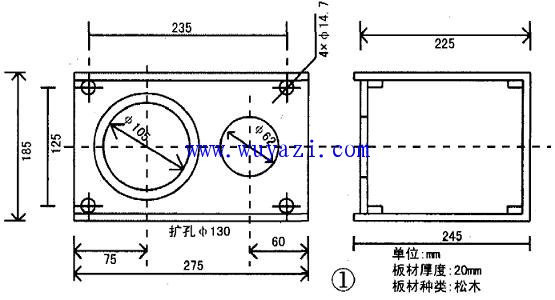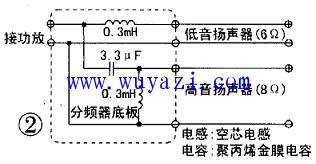When it comes to speakers, most people immediately think of large floor-standing models. However, when it comes to small speakers, many assume that their sound quality won't match that of larger ones. But is this really the case?
I have a pair of "Silver Flute" YD131-727X 5-inch woofers and a pair of "Silver Flute" YDQG4-2 tweeters, which I used to build a compact speaker system. Here's how I went about it:
Step 1: Choose the Enclosure Type I decided on a sealed enclosure because, although a ported design offers deeper bass, I preferred the tighter, more controlled sound of a closed box.
Step 2: Calculate the Internal Volume Using the formula: V = 355 × aⴠ/ (α × f₀² × m₀) Where: - V = internal volume (in liters) - a = effective cone radius (in cm) - α = stiffness ratio - f₀ = resonance frequency - m₀ = equivalent mass of the driver By setting Qoc to 0.7 and substituting values, I found that the optimal volume was around 6.5 liters. This matched the manufacturer’s recommendation, confirming my choice.
Step 3: Determine the Cabinet Dimensions To avoid standing waves, I chose a non-proportional ratio of 1.6:1.0:1.1 for length, width, and height. Calculating based on this, the final dimensions were approximately 23.5 cm (length), 14.5 cm (width), and 18.5 cm (height).

Step 4: Design the Crossover Network The crossover frequency was set to around 5 kHz, considering the range of both drivers. The woofer has a 6Ω impedance, while the tweeter is 8Ω. I designed a 6dB/octave high-pass filter for the woofer and a 12dB/octave low-pass filter for the tweeter. Values were adjusted empirically but remained within acceptable limits.

Step 5: Build the Cabinet I used solid wood panels and glued them together with wood screws. After sealing the interior with asphalt and adding acoustic foam, I installed the drivers and crossover inside the box.
Step 6: Finish and Decorate After sanding and applying three coats of spray paint, I added protective grilles made from mesh stretched over a wooden frame. The result was a clean, professional-looking speaker cabinet.
Listening Test When I tested the speakers using an audio CD, the frequency response between 90Hz and 18kHz was quite flat. In real listening, they performed well for pop and light music, though dynamic range was slightly limited. With a tube amplifier (6N2+6P14), they delivered excellent clarity for country and saxophone tracks.
While large speakers offer more power and bass, small speakers like these are incredibly versatile. They can be placed on shelves or in corners with ease, and they bring great sound quality without taking up much space. It's amazing how such a small system can deliver such a satisfying musical experience.
Permanent Magnet Motor For Metro Rail Transit
Permanent Magnet Motor For Metro Rail Transit,Motor For Metro Rail,Motor For Permanent Magnet,Transit Starter Motor
Jiangsu Hengchi Motor Technology Co., Ltd , https://www.hcemotor.com